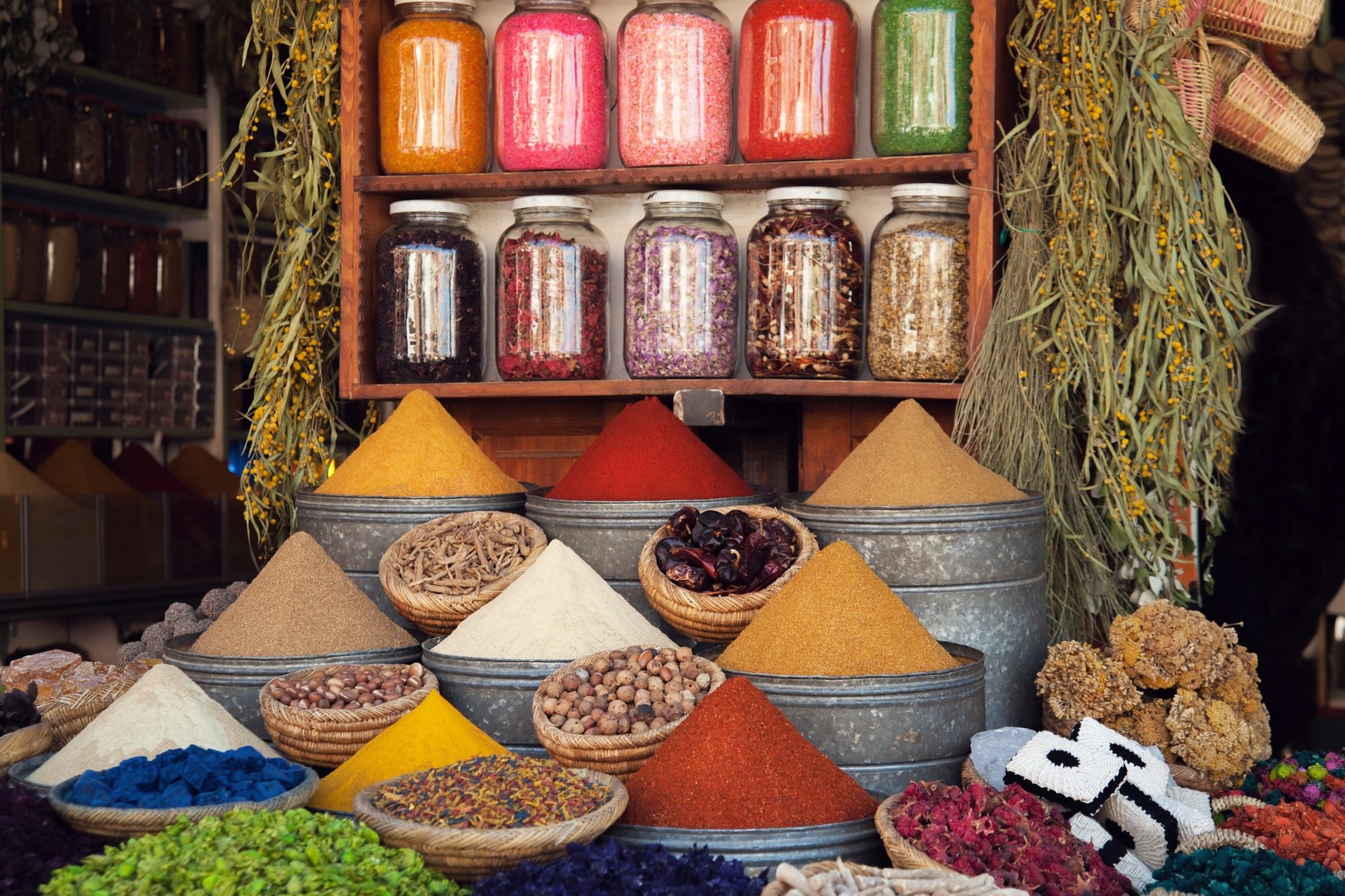
Traveling to Morocco and wondering about the local cuisine? What kind of spices are used? Where do the ingredients come from? Where can you find the best places to eat? We’ve got you. Below, we break down everything travelers need to know about the best food in Morocco.
Want an expert-sourced, foodie-friendly and personalized travel plan? Connect with Fora. We’ll share insider intel to enjoy Morocco’s best dishes and experiences. Even better, we can score you VIP perks and status at the top hotels in Morocco.
First, is Morocco a good destination for foodies? (Hint: absolutely!)
Moroccan cuisine offers a delicious blend of unique and familiar flavors cultivated over thousands of years, marrying influences from Europe, Africa and the Middle East. Checking out the local foodie scene is easily one of the top things to do in Morocco.
What is traditional Moroccan cuisine? What are its influences?
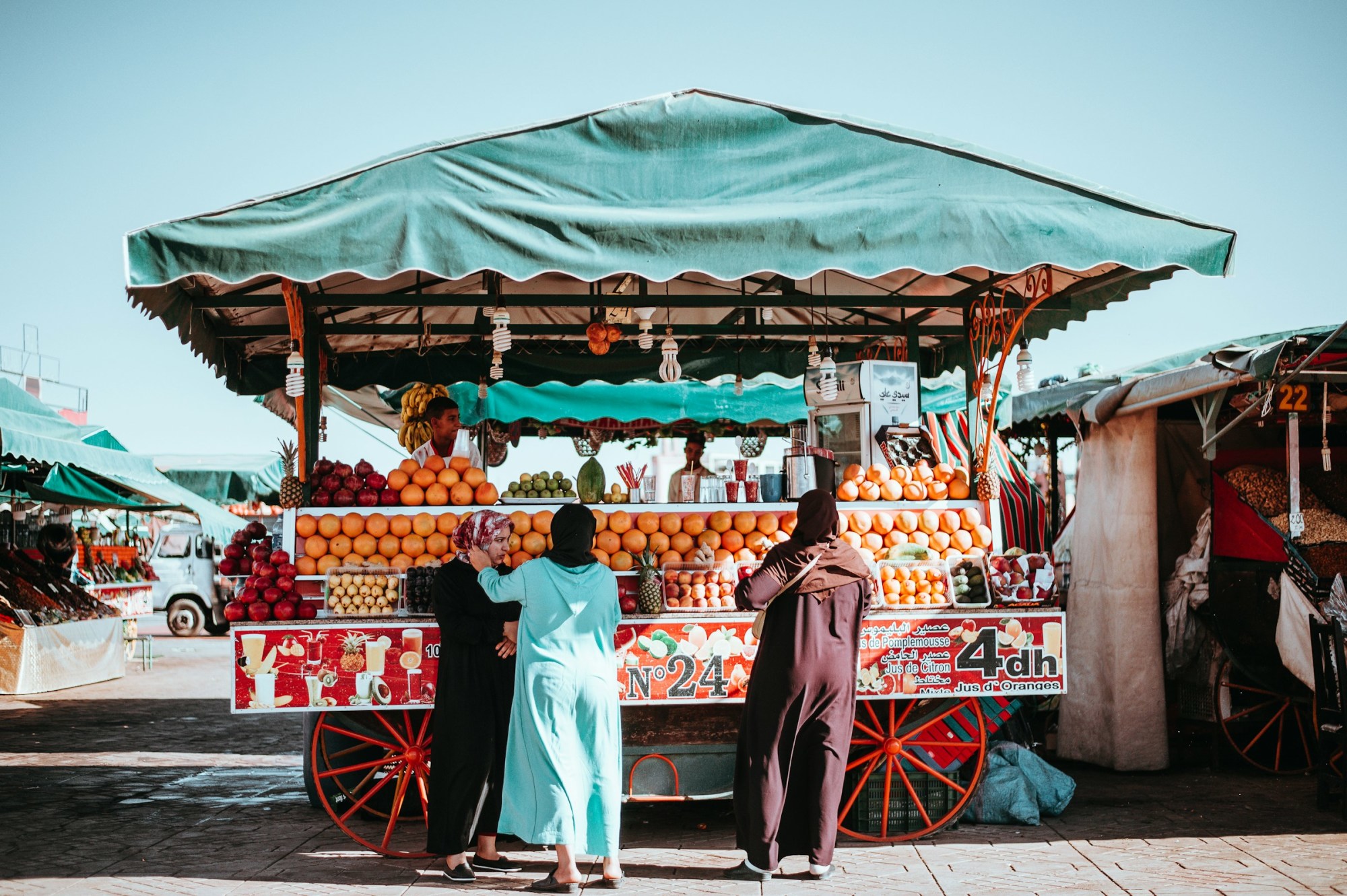
Morocco is part of North Africa — the westernmost part of the Islamic world and the crossroads between the three Old World continents — so there are many influences on Moroccan cuisine. And the signatures of Amazigh, Andalusian, Mediterranean, Western European (especially French) and sub-Saharan cultures are all present.
Most food in Morocco tends to have a rich, aromatic and earthy profile with very mild heat. Many dishes have a subtle sweetness sourced from spices like cinnamon and ginger, too. Moroccan staples include a variety of stews, soups and meat or fish dishes served with couscous and vegetables.
The best food in Morocco to try for travelers
Not sure what to expect as far as food in Morocco goes? Read on for a quick summary of some of the country’s most coveted dishes.
Have more questions about visiting Morocco? Check out our ultimate Morocco travel guide — or better yet, connect with Fora. Our travel advisors can answer all your travel questions and set you up with top-notch hotels across the country.
1. Couscous: the national dish of Morocco
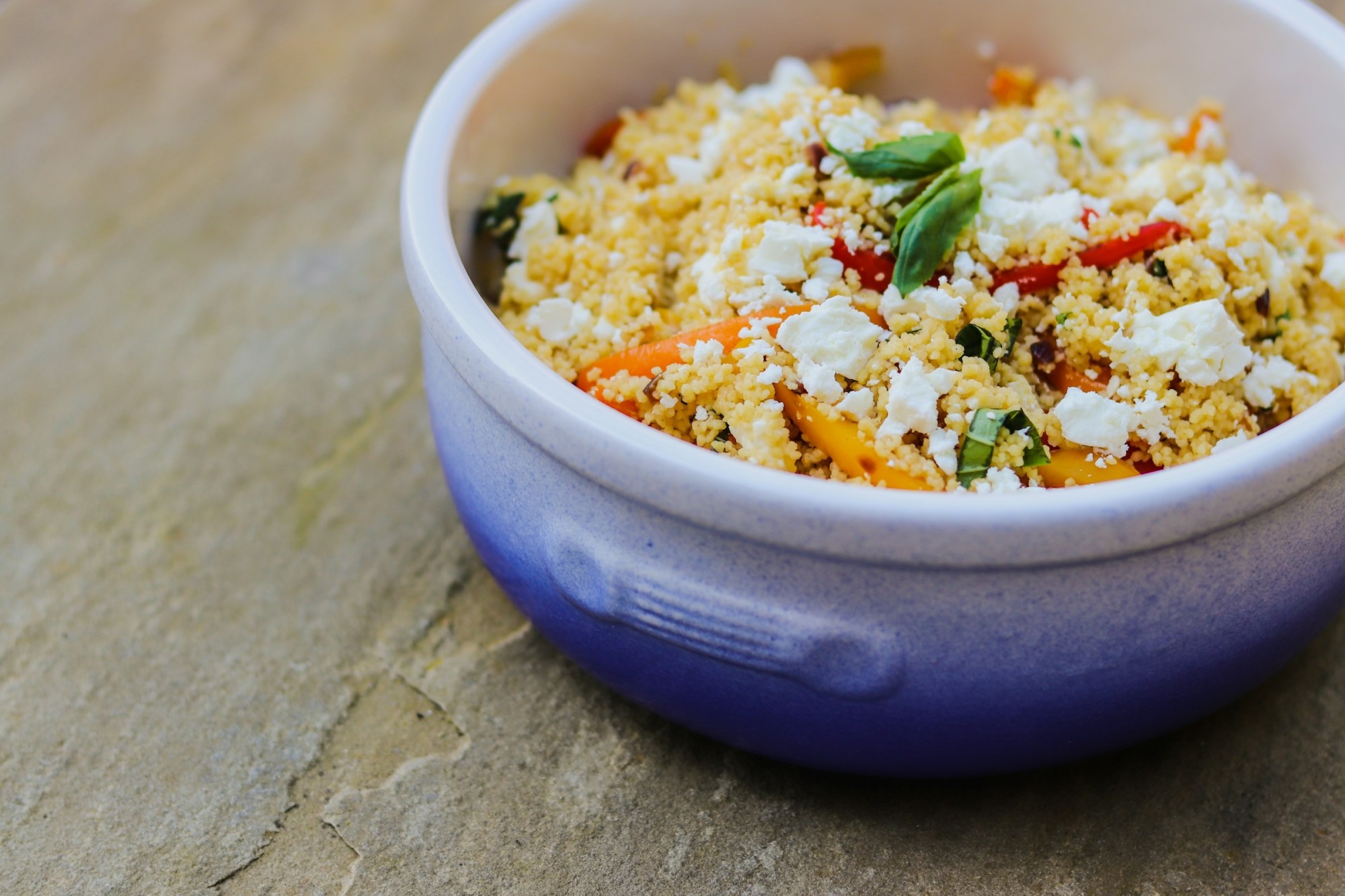
Couscous is a tiny, ball-shaped and grain-like pasta made from a special type of wheat native to the region. It’s usually served with veggies and a protein, but you may also see it in stews and soups.
On its own, couscous has a slightly nutty flavor. However, its real potential lies in its ability to absorb the flavors of other ingredients in a dish. This makes it a versatile ingredient that’s compatible with just about anything.
Couscous’ value goes beyond its flavor profile. Following midday prayers every Friday, it's customary for Moroccans to gather with friends and family to share couscous-based meals.
2. Tagine: North Africa’s most famous stew
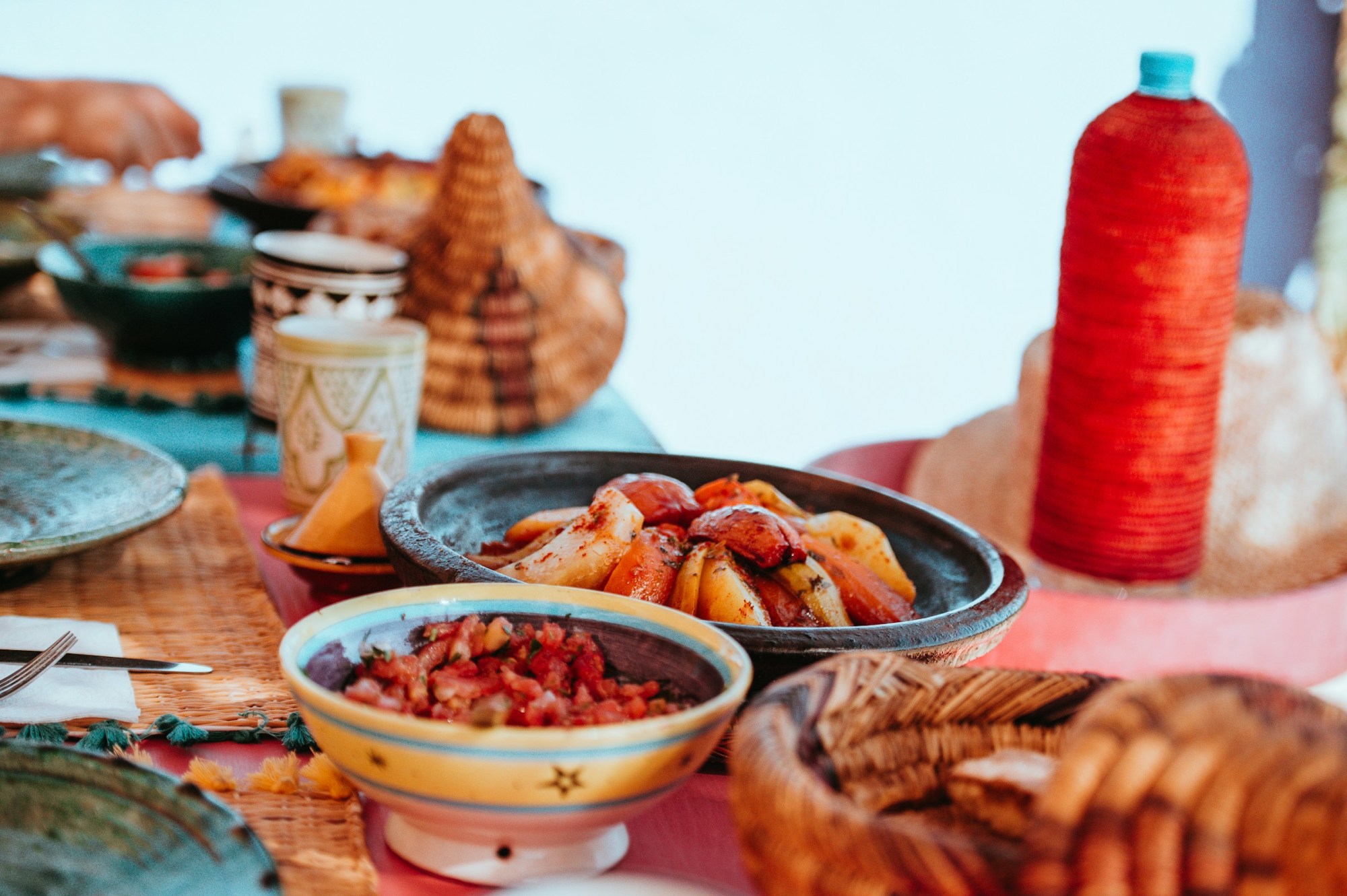
Tagine is a hearty, warming stew usually made with a variation of ras el hanout, a local spice blend that tends to feature cumin, ginger and cinnamon, among others (it’s really up to the chef). Most tagines then feature a braised protein — chicken, lamb and chickpeas are common choices — plus veggies and more spices. The options are nearly endless.
3. Harira: a silky soup most associated with Ramadan
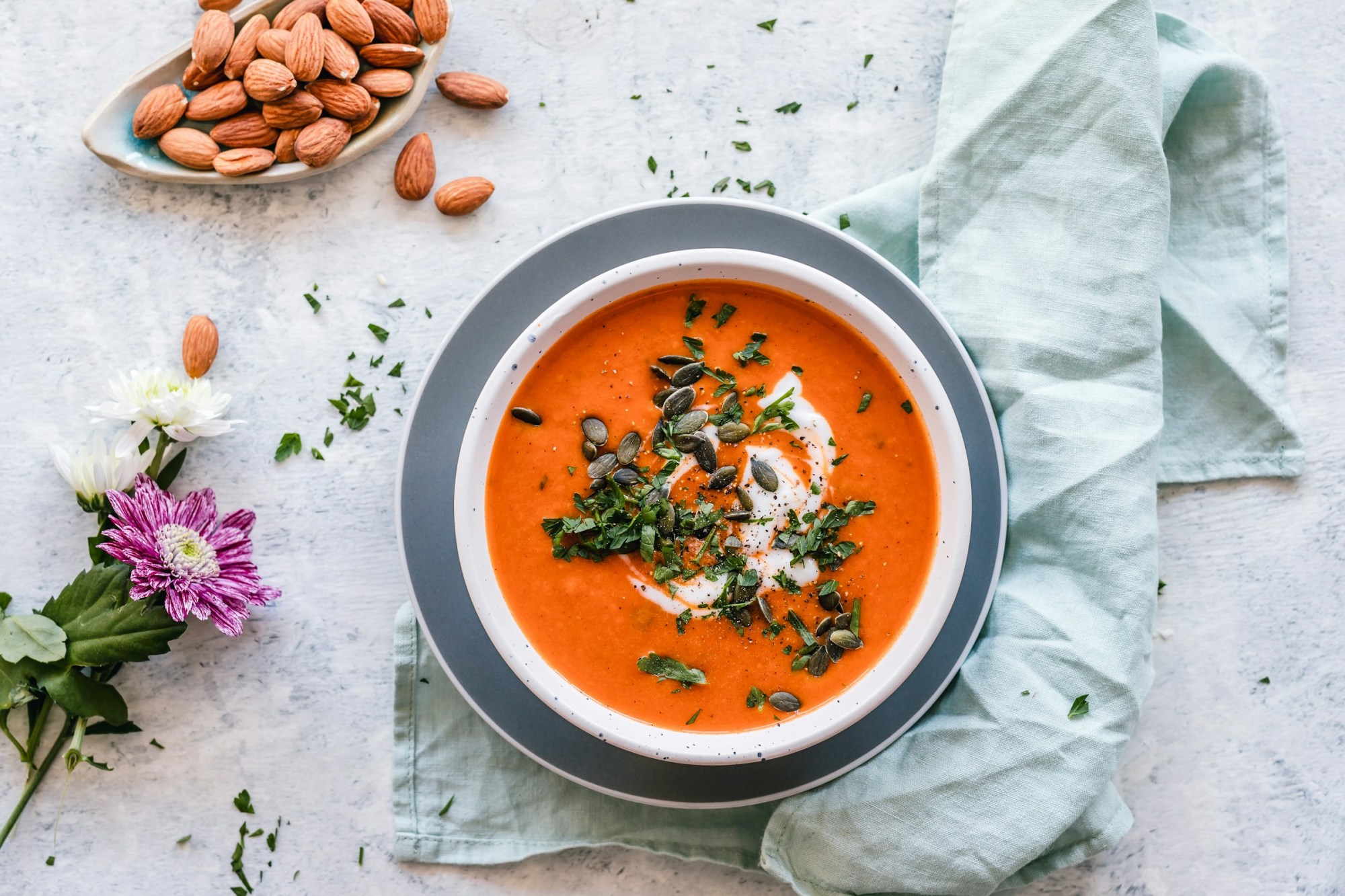
A staple of Ramadan, where it’s used to break the fast, harira is named for its velvety smooth texture (harira is the Arabic word for silk). It’s a tomato- and lentil-based soup ranging from thick and zesty to light and subtle. In fact, like tagine, the exact makeup of harira changes by family and region — however, the two do share a similar spice profile.
4. Mint tea: a traditional pastime as much as a soothing beverage
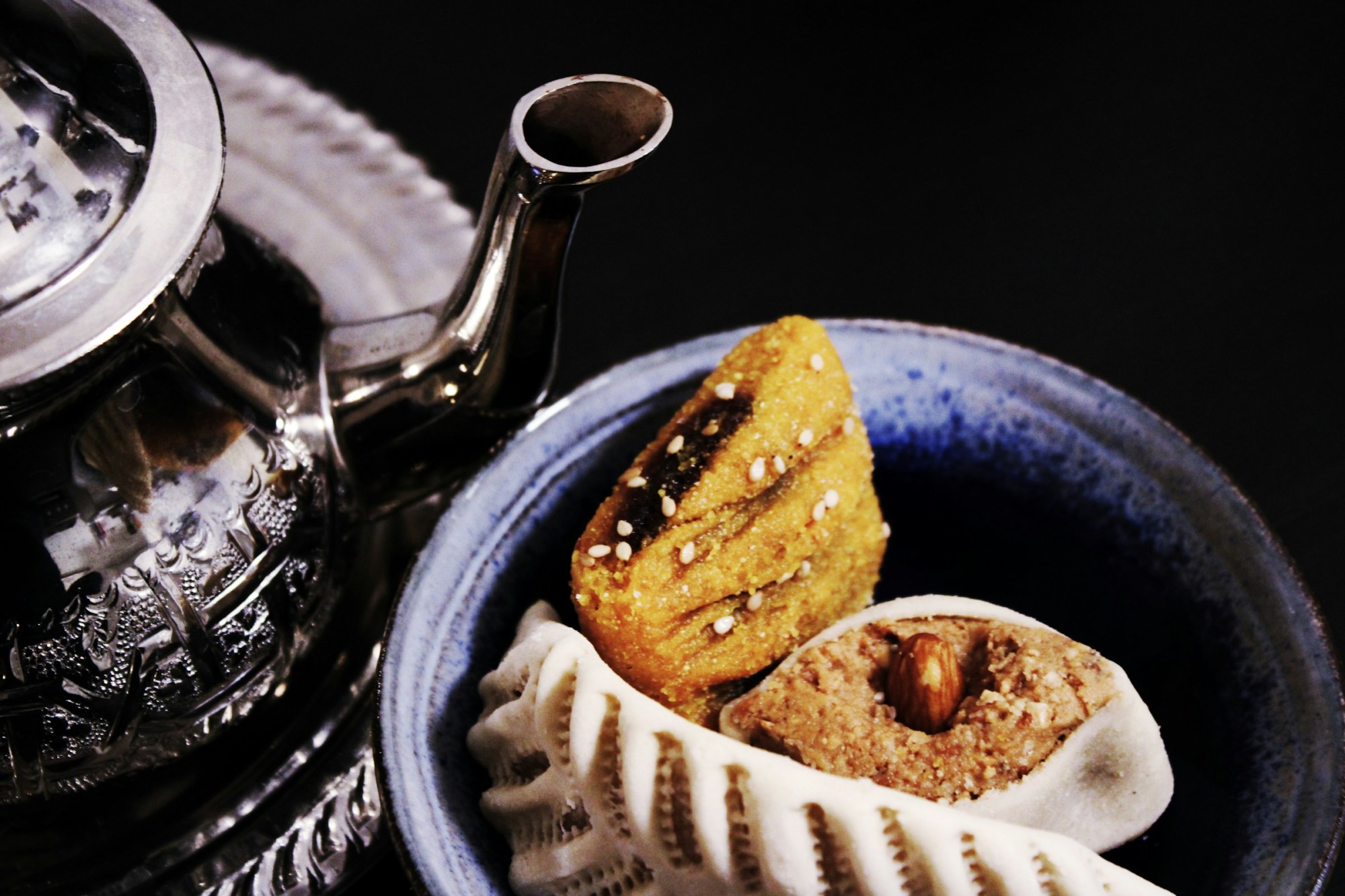
Mint tea has a special place in Moroccan culture and hospitality. At gatherings, hosts will treat guests to a series of increasingly strong glasses of mint tea as it steeps amid the conversation. The blend used in Morocco is native to the country.
As a traveler, don’t be surprised to be served mint tea at restaurants, homes and even hotels in Morocco — it’s a courtesy to accept the first glass, though additional glasses are generally considered optional.
(Curious about the sights and tastes of Marrakech? Read our guide.)
5. Bastilla (a.k.a. pastilla): a savory pie often served on special occasions
Flaky crust and a rich, warm filling combine to make bastilla (a.k.a. pastilla or chicken / pigeon pie) a favorite among Morocco food enthusiasts. The crust is made with warqa, which is pretty similar to phyllo dough, while the filling features chicken (or squab) and caramelized onions. Almonds and/or pistachios are common additions, too. And then the spice profile usually stars the same ras el hanout blend mentioned above. Variations include seafood (shrimp, calamari or fish) and vegetarian fillings.
Bastilla tends to be served at celebrations, but it’s also a staple among Moroccan restaurants. (By the way, we can share great restaurant recs in Morocco — just ask a Fora Advisor.)
6. Zaalouk: a famous vegetarian starter in Moroccan cuisine
Zaalouk is a cooked salad made from roasted eggplant and tomatoes. It’s usually served as a dip with bread, but it’s also used as a side dish. The eggplant is usually grilled to impart a smoky flavor before it’s either mashed or blended — depending on the desired consistency — with fresh tomatoes, garlic, herbs and spices like cumin, paprika and sometimes chili flakes for heat.
7. Chebakia: a unique dessert with cultural significance
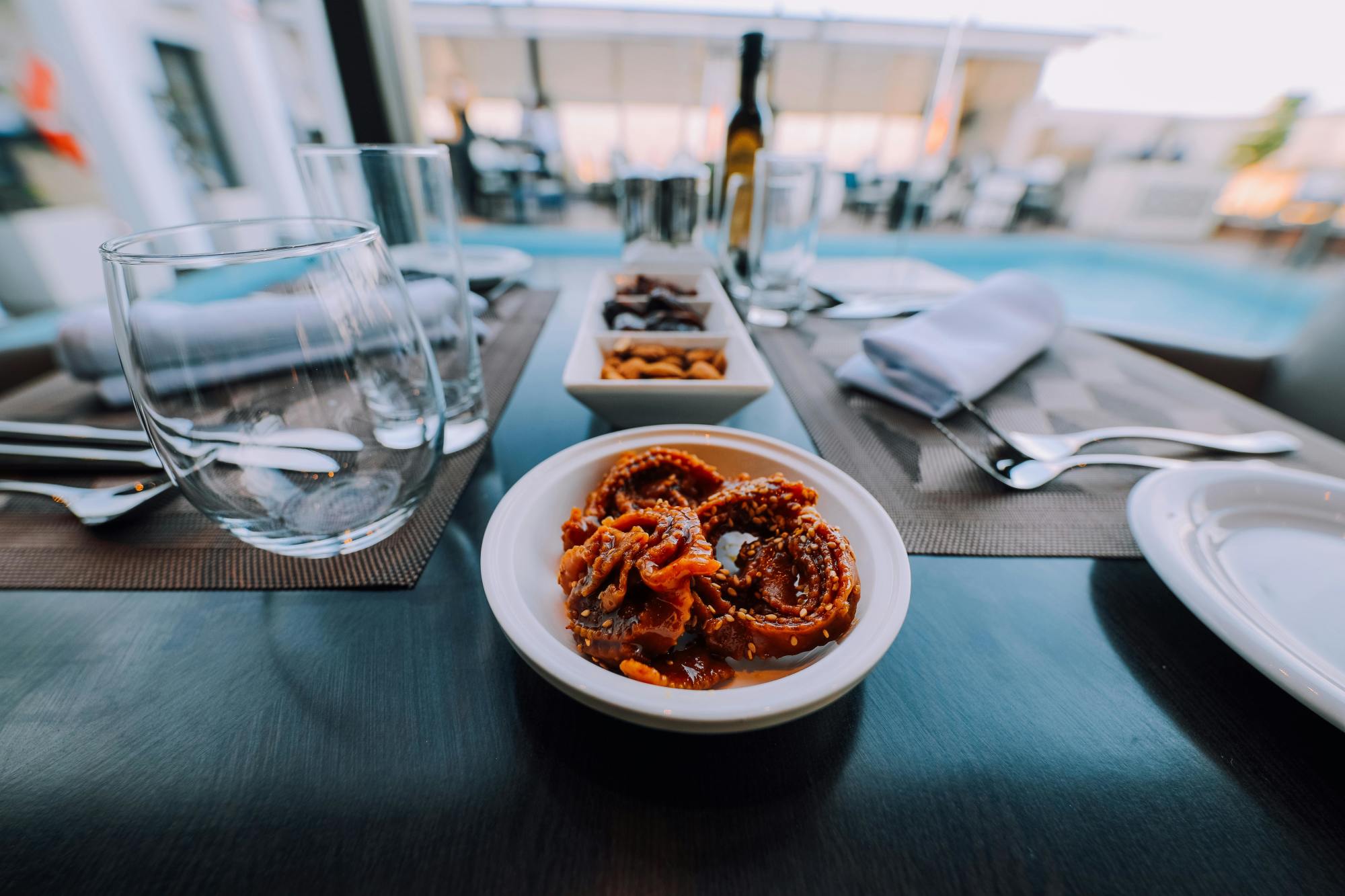
Chebakia is a crunchy, fried dessert vaguely reminiscent of American funnel cake — except it has a heavy, chewier interior and a more natural flavor profile. Thin strips of spiced dough are twisted and folded into flower-like shapes before they’re deep-fried and then soaked in an orange flower-honey syrup. Some versions are then topped with roasted sesame seeds or almonds.
Chebakia holds special significance during Ramadan, when the dessert is supposed to be shared with friends and family.
(Where else does food intersect with culture in Morocco? Read our food and culture guide to Marrakech.)
8. Brochettes: Morocco’s take on a street-food classic
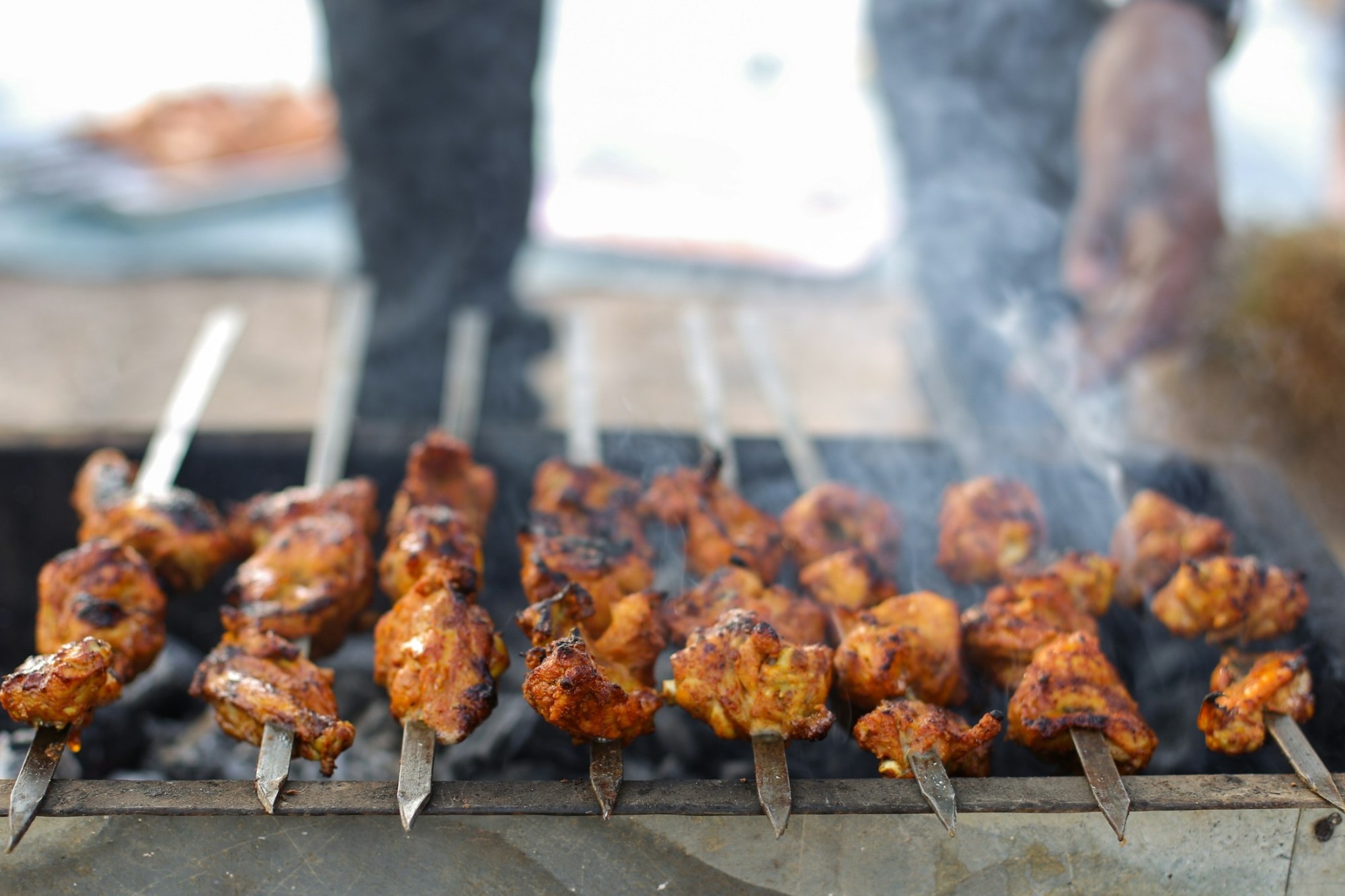
More or less identical to kebabs, brochettes are Morocco’s take on the classic street food. Beef, lamb, chicken, peppers, mango…brochettes are super versatile. Pretty much anything marinated in Moroccan sauces and spices before roasting counts. Brochettes are also pretty common in more formal Moroccan restaurants.
Morocco food tours in Marrakech, Fes and more
There’s arguably no better way to sample the country’s best dishes than on a Morocco food tour. Marrakech has the most options, but you’ll generally find food tours in all the major cities (Fes, Rabat). Better yet, if you reach out to a Fora Advisor, they can reserve you a spot on the best food tours to complement your itinerary.
Morocco food FAQs: destinations, tips & more
Have more questions about food in Morocco? We have answers.
What are the best places to stay in Morocco for foodies?
Marrakech, which arguably tops the list of the most popular and best places to visit in Morocco, is a renowned foodie destination. The medina is filled with street vendors, while the new city hosts plenty of upscale restaurants — there are options for all budgets. Fes isn’t far behind, and many argue that it even offers a more authentic dining landscape.
Essaouira, Morocco — on the Atlantic coast — is well-known within the country for its fresh seafood. And Casablanca, Morocco’s most cosmopolitan city, has a great international gastronomy scene.
What ingredients are common in Moroccan food?

Couscous is, of course, a national staple. But broadly speaking, meats — particularly chicken, lamb or beef — are found in most meals. Sardines, usually served as a side or starter, are also a local favorite.
Vegetarian options are relatively common in Morocco, too. (Chickpeas and lentils are a popular meat substitute.) While the spice profile is a slight departure from what’s common in American and European cuisine, common veggie ingredients include potatoes, onions, carrots, peppers and turnips.
In terms of spices, cumin is a local favorite, followed by cinnamon, ginger and mild chilis. To a lesser extent, Asian and American imports like coriander, turmeric, clove, paprika and allspice are also commonly used, though rarely as the featuring ingredient. It’s worth noting that Moroccan spices are a great souvenir from Morocco. Pick up the blends you want from a local medina.
(Interested in staying at a resort that sources only the freshest Moroccan spices and ingredients? Check out our guide to Amanjena Resort in Marrakech.)
Where are the best Moroccan food tours?
The best local gastronomy tours in Morocco are usually found in cities like Marrakech and Fes. If you’re interested in more of an international menu, you might prefer food tours in Casablanca.
A Fora Advisor can incorporate food tours on a customized Morocco itinerary.
What other types of food are popular in Morocco?
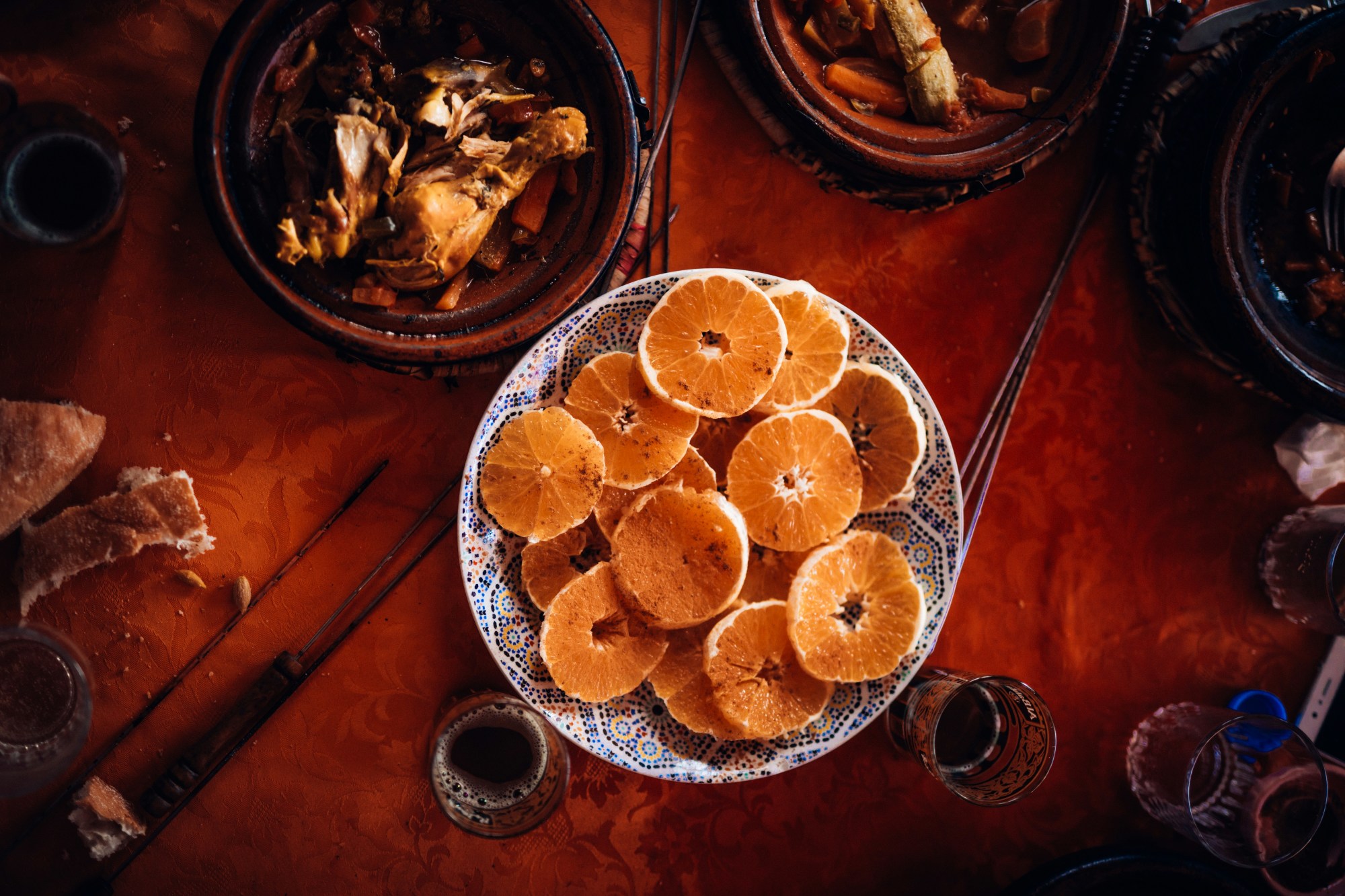
Morocco is well-connected to the rest of the world, so international menus aren’t hard to find in the major cities. European, Asian and African cuisines are especially popular. Many local Moroccans only eat international cuisine when they dine out (because they prefer to cook their own Moroccan dishes).
(P.S. Many of the best hotels in Marrakech, Morocco have international dining options.)
Is the food spicy in Morocco?
In terms of heat, the food in Morocco is generally mild, but flavorful. Of course, heat is fairly subjective, so if you have an especially sensitive palette, you may want to avoid certain dishes.
Can’t wait to try the food in Morocco? Plan & book your trip with a Fora Advisor
Want an itinerary filled with Moroccan food recs? Need to know which hotels have stellar dining choices? (Marrakech's Mandarin Oriental is one solid option.)
Connect with a Fora Advisor to plan and book your trip. They’ll help you explore the local gastronomy (sourced from expert and local intel), and they’ll make sure your hotel experience is top-tier, complete with great hotel perks such as complimentary daily breakfast and / or property credits you can put toward fine meals.
Looking for more Morocco travel inspiration? Check out these guides, too:
